#island birds
Text

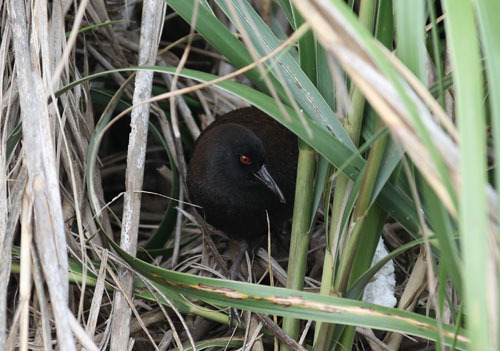

Access Denied: The Inaccessible Island Rail
The Inaccessible Island rail (Laterallus rogersi) is a rarely seen member of the rail family, Rallidae. Part of the reason for its obscurity is the place in which it resides: Inaccessible Island, part of the Tristan da Cunha archipelago in the southern Atlantic Ocean. These islands are extremely remote, and until 2019 it was unclear how L. rogersi even came to be there. We now know that the species colonized the island some 1.5 million years ago, originally coming in from South America and subsequently losing its ability to fly.
In addition to its unique evolutionary history, the Inaccessible Island rail's greatest claim is that it is the smallest flightless bird in the world. Individuals weigh between 35 to 49 g (1.2–1.7 oz) and can be 13 to 15.5 cm (5.1–6.1 in) long from beak to tail. Members of both sexes are dark brown with red eyes; some may have white striping along the underbelly or wings. Females tend to be slightly smaller and lighter in color than males.
The Inaccesible Island rail can be found on all habitats on the island in which it inhabits; these include low mountains and fern brush though the species is most abundant in the grasslands that grow close to the rocky shore. Within these habitats, L. rogersi is largely diurnal. They freely forage for invertebrates, including earthworms, beetles, and moths, as well as seeds and berries; as they have no natural predators they have few defenses against potential threats, although they can run extremely fast when alarmed.
Adults are highly territorial, and when two rivals of either sex encounter each other they will display by lowering their heads, circling each other, and calling loudly until one of them concedes. Males and females mate for life, and build nests in the tall grass. The breeding season is between October and January, in late summer, and females lay a clutch of 2 eggs. Both parents take turns incubating the eggs until they hatch. Chicks can be vulnerable to predation by the migratory brown skua, so parents guard the nest fiercely. The time it takes for chicks to fully mature is unknown, as is the average lifespan in the wild.
Conservation status: The Inaccessible Island rail is considered Vulnerable by the IUCN. The island's population is believed to stand at about 5,600 adult birds. While the island's ecology is currently stable, researchers believe the species would be seriously imperaled if invasive species such as house mice, feral cats and brown rats were introduced. Access to the island is currently restricted, and the island has been declared a nature reserve by the Tristan da Cunha Island Council.
If you like what I do, consider leaving a tip or buying me a kofi!
Photos
Peter G. Ryan
#inaccessible island rail#Gruiformes#Rallidae#rails#birds#islands#island birds#grasslands#grassland birds#Atlantic ocean#animal facts#biology#zoology
940 notes
·
View notes
Text
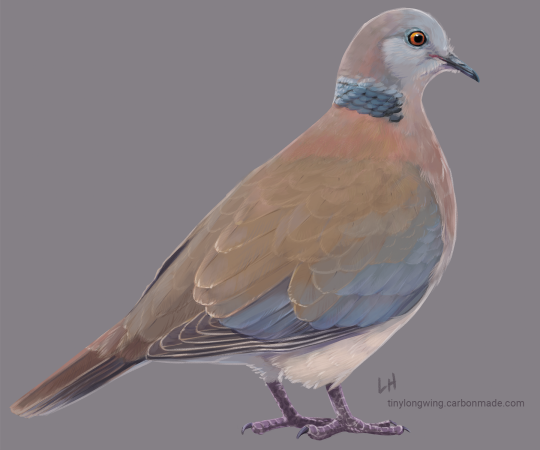
Philippine Collared-Dove (Streptopelia dusumieri). Declining in their home range (Philippines), but quite common in villages of the Northern Mariana Islands where they were introduced sometime in the 1700s. Now considered naturalized, they're charming & sort of goofy with their hoarse cooing from the power lines and coconut palms.
#dove#pigeon#collared-dove#birb#borb#scientific illustration#ornithology#island birds#northern mariana islands#cnmi#philippines#philippine collared-dove#birblr#birdblr#artists on tumblr
262 notes
·
View notes
Text
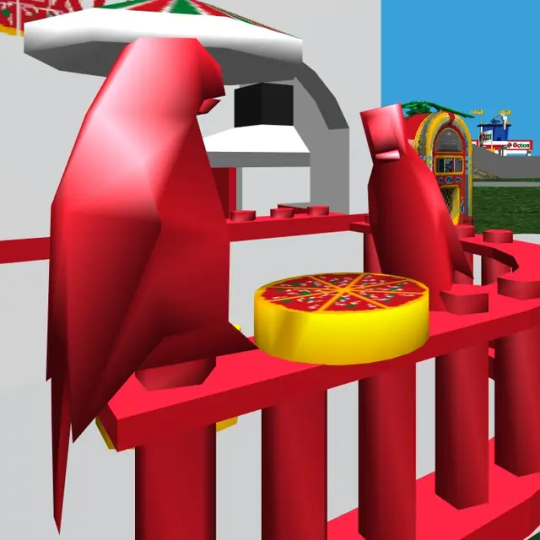
Mr. and Mrs. Pollywanna from LEGO Island
#mr and mrs pollywanna#parrot#bird#lego island#thank you for your submission!#i love them#and i hope they had a wonderful meal
4K notes
·
View notes
Photo
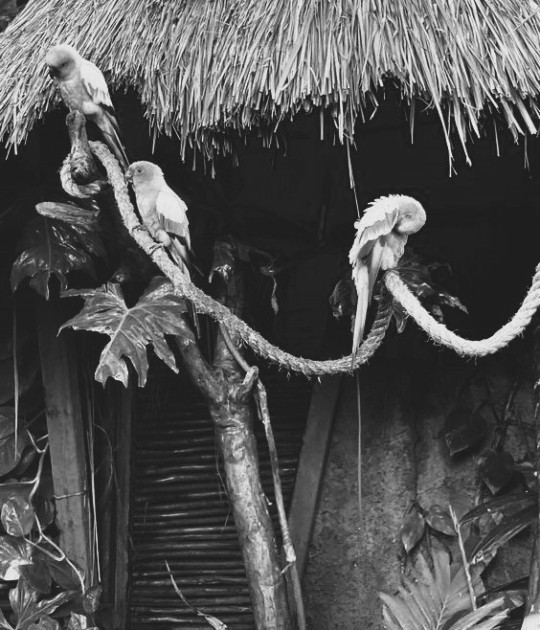
Sun Conure
0 notes
Text

Sometimes all you wanna do is visit an island and chill with your four bird friends on top of a cliff.
Sonic 3D Blast Flicky Redesigns
#miles tails prower#tails the fox#sonic#sonic the hedgehog#flicky#flicky bird#sonic 3d blast#sonic flicky#flicky island#my art#I feel like i've been coloring this for 100 years#headcanon stuff i'm messing with based off the tail's 30th anniversary comic cause it's hella cute#he loves his little friends so much
2K notes
·
View notes
Text
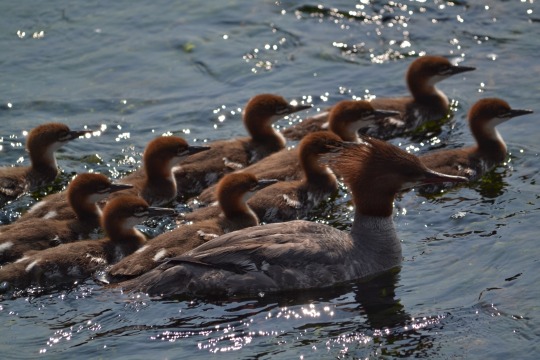

Safe travels in the world, little ducks
#nature photography#original photography#original photography on tumblr#artists on tumblr#birds#nature#vancouver island#pnw#birding#bird photography#birdwatching#duckposting#ducks#common merganser#merganser
4K notes
·
View notes
Text

Ultramarine Lorikeets (Vini ultramarina), family Psittaculidae, endemic to the Marquesas Islands (South Pacific)
ENDANGERED.
photograph by peterodekerken
3K notes
·
View notes
Text
I understand where the “Jason should get his own city” people are coming from but I could not disagree more. Gotham is his wire mother. And you know how Jason gets about his moms
#Jason and Bruce are both in a toxic relationship with Gotham but to Bruce she’s his evil wife and to Jason she’s his wretched mother#To me. <3#I don’t think Jason should be the globetrotter I think he should be like one of those highly specialized birds of paradise that exist on 1#tiny island in the pacific#Jason Todd#dc
1K notes
·
View notes
Text

I made a Trolls OC because of course I did. She is a bee herder and she's constantly covered in pollen.
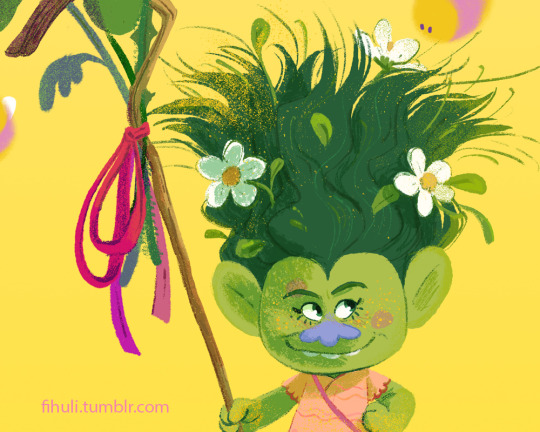
#trolls#dreamworks trolls#dw trolls#my art#trolls oc#she's something between an oc and self insert lol#thinking of giving her the name Birdie#after the bird cherry in front of my house that's always full of bees when it's blooming#i liked the new movie#and it made me go insane over broppy again (don't ask)#but i really missed the creature and world/background design from the previous two#i prefer the fuzzy fabricy living nature to the smooth plasticy dead look of a futuristic cityscape#or also whatever those islander muppets are#oc#fanart#birdie#bees
833 notes
·
View notes
Photo




Crowning the King Penguin
The second largest species of penguin in the world, the king penguin (Aptenodytes patagonicus) is found along the southern coasts of South America and Australia, as well as islands surrounding Antarctica. They thrive mainly along sparsely vegetated coasts and on the wide ice sheets that surround the Antarctic continent in the winter. They can endure temperatures of up to -10°C and swim in temperatures frequently below freezing.
The king penguin is among the largest penguins, about a meter at its tallest and weighing up to 18kg; generally females are slightly smaller than males. They look very similar to their larger relative the emperor penguin (Aptenodytes forsteri): both sport a dark grey or black head with yellow patches on the sides and throat, a dark back, and a white belly. However, the king penguin is more brightly coloured than the emporer penguin, and has a longer bill. Young penguins have an entirely brown coat, and only grow their adult feathers after several molts.
The primary food source for A. patagonicus are cephalopods and small fish, supplemented by krill and other marine invertebrates. Although they usually hunt in the upper water column for such prey, they regularly dive down to depths of over 200m. To find hunting grounds, king penguins can travel up to 500km from their colony. Year-round predators include fur seals, leopard seals and killer whales, and in the summer birds can snatch eggs and hatchlings.
Though king penguins have no formal social structure, they are highly social creatures. Groups of anywhere from a dozen to a hundred individuals travel together between seasons, hunt together, and frequently call to each other. Colonies themselves can easily number in the tens of thousands. King penguins also serially monogamous; they stay with one mate throughout a breeding season, and the next season both mates choose whether to return to their nest or search for a better mate. More often than not, pairs will stay together throughout multiple seasons, though king penguins do have lower rates of monogamy than other penguin species. King penguins also regularly exhibit homosexuality in the wild, with one study finding over a quarter of pairs in a colony were between same-sex individuals.
King penguins are one of only two species of penguin that do not build nests. At the beginning of the mating season, in spring, single males perform loud displays, throwing their head and wings back and puffing out their chests. The female chooses a mate, and the two perform a short dance, after which they molt together for a month. Shortly after, the female lays one egg. This eggs incubates for about 54 days, cared for and carried in a special pouch by both parents. and the ensuing chick is looked after and fed for another 14 to 16 months. During that time, parents take turns hunting for food at sea, and groups of chicks can form a crèche which is looked after by another, unrelated adult. At almost two years old, chicks become fully independent, though they do not mature sexually until 3-5 years of age. King penguins can live up to 25 years in the wild.
Conservation status: The IUCN has rated the king penguin as Least Concern. However, shrinking ice sheets have reduced feeding grounds and breeding colonies, and large reductions in the population are expected in the future.
Photos
Kimberly Kliska
Kerry Steinberner
Carl Henry
Tom Brakefield
#king penguin#Sphenisciformes#Spheniscidae#great penguins#penguins#birds#marine fauna#marine birds#islands#island birds#coasts#coastal birds#open ocean#open ocean birds#pelagic fauna#pelagic birds#antarctica#south america#southern south america#oceania#southern oceania#antarctic ocean#queer fauna#animal facts#biology#zoology
403 notes
·
View notes
Text
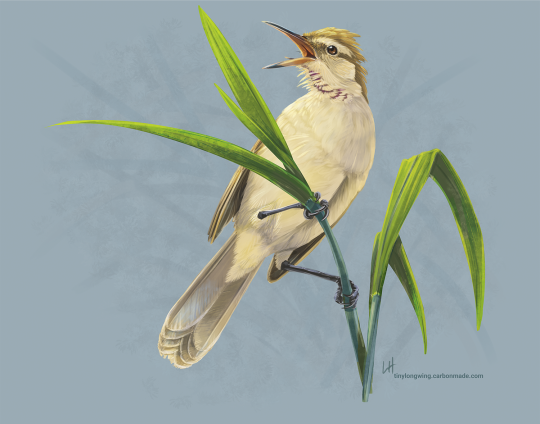
Ga'ga karisu, Saipan Reed-Warbler (Acrocephalus hiwae) is a critically endangered species found in the Northern Mariana Islands. Though few remain due to habitat loss, they fill the air with their rich melodic songs in those places where they can still hold on.
Their closest relative, the Nightingale Reed-Warbler of Guam, is extinct due to habitat loss and the invasive brown tree snake.
#endangered species#endangered birds#scientific illustration#birblr#saipan reed-warbler#reed-warbler#nightingale reed-warbler#northern mariana islands#pacific islands#artists on tumblr
3K notes
·
View notes
Photo

Greek summers
Milos island by Dain Anderson.
#greece#europe#travel#bird's eye view#beach#village#summer#milos#cyclades#cycladic islands#greek islands
1K notes
·
View notes
Text
can we talk about Phil and Jaiden today and their interactions after Jaiden finally shows her wings because I’m going crazy.
Jaiden showing off her wings for the first time to Phil, and Phil both happy for her and also insanely jealous, because why did she get to keep her wings, while his got clipped so badly he needs his backpack to counterbalance the weight he lost - or at least the weight he looses having to keep them close to his back.
and the whole time they’re talking in a group, hanging around spawn, Jaiden is perched somewhere above the group. up in a tree, moving from branch to branch, or against the wall, or right on the top of that lamppost. Phil, on the other hand, stays sat on the bench the entire time. grounded.
and every time Jaiden hops from perch to perch, he looks specifically at her. zooms in whiles she’s sat on the lamppost even as he continues conversation. its such a small detail but really helps punch in just how much Philza can’t let it go, can’t stop wishing that he could do the same.
#the bird lore goes fucking crazy on the qsmp man#the fact that they’re both og island residents….I need more phil backstory now more than ever. was jaiden allowed to keep her wings as is#because they knew she wouldn’t fly away? while phil was known to be wild? were they both previous experiments and jaiden was better behaved?#also#im still not clear on if he’s said they’re gone or just clipped but man. if they’re just clipped that backpack on them cannot be comfortable#I have questions and I honestly dread the answers#phil ‘allergic to lore’ za using casual gameplay movement to rp and then blatantly dropping character info#mcyt#qsmp#q!philza#philza#q!jaiden#jaiden#z speaks
660 notes
·
View notes
Text
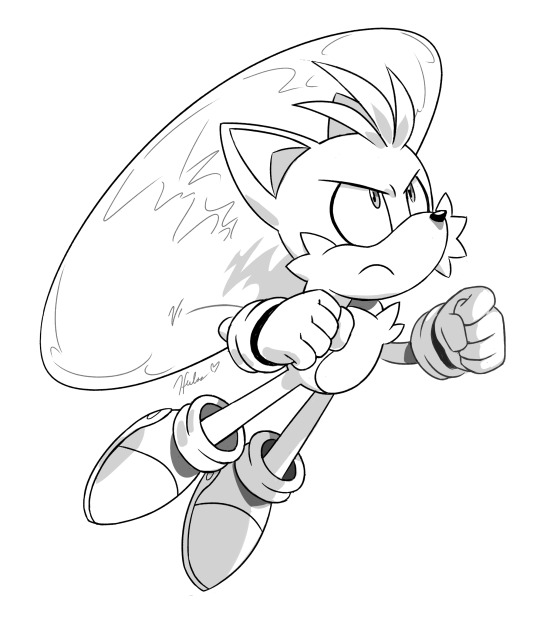
Sorry for all the sonic art posting, but it's the only thing that's getting me sketching personal art again at the moment haha.
I really liked this one panel from the Tails 30th Anniversary Special comic that takes place on Flicky Island with Classic Tails so I wanted to sketch Modern Tails (my fluffier version) in the same pose. I'll be adding his Flickies in this image later as well because these silly little birds are the only thing on my mind right now.. Reference used posted below. :)

#tails the fox#miles tails prower#sonic the hedgehog#sonic#sth#tails#flicky#flickies#flicky island#my art#everyone has their favorite side characters they love and then there's me hyperfixated on these tiny birds#Tails is my favorite sonic character though can't you tell lol
487 notes
·
View notes
Text

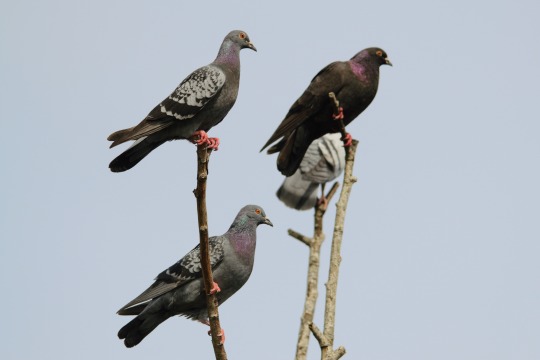
#pigeon#birds#original photography on tumblr#lensblr#original photography#nature#vancouver island#nature photography#pnw#birding#bird photography#birdwatching
687 notes
·
View notes
Text
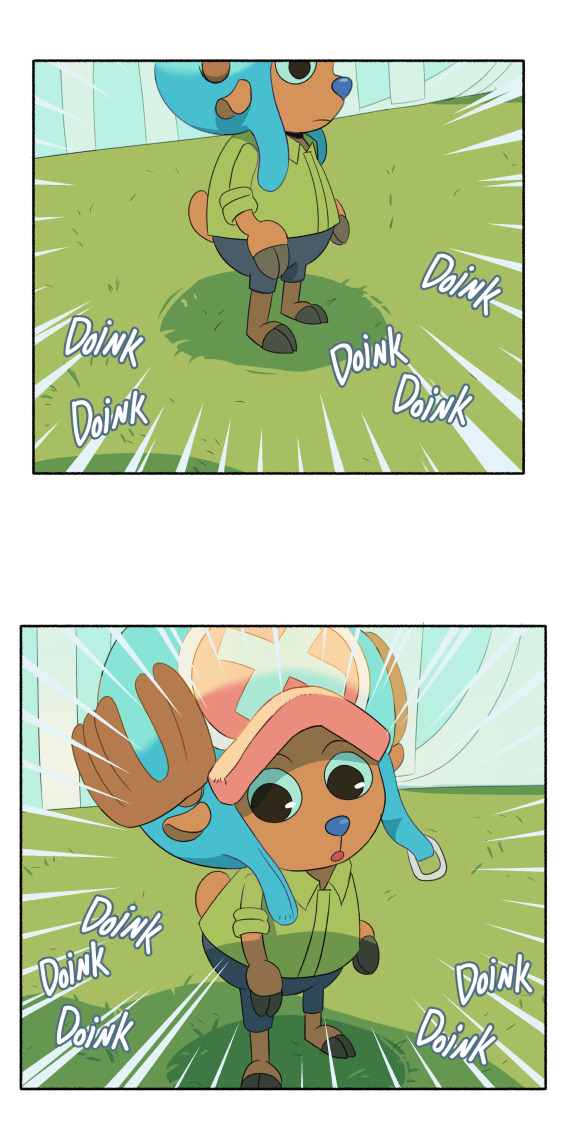
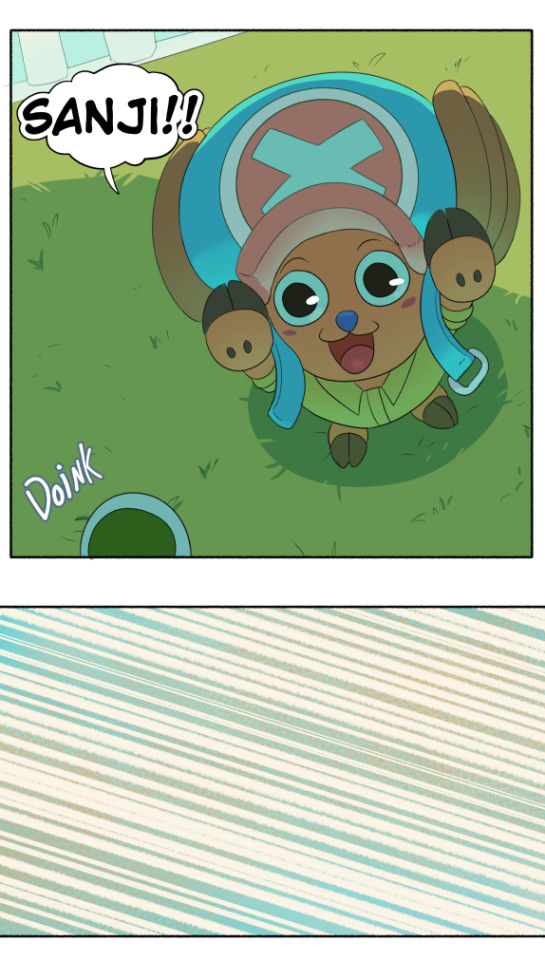
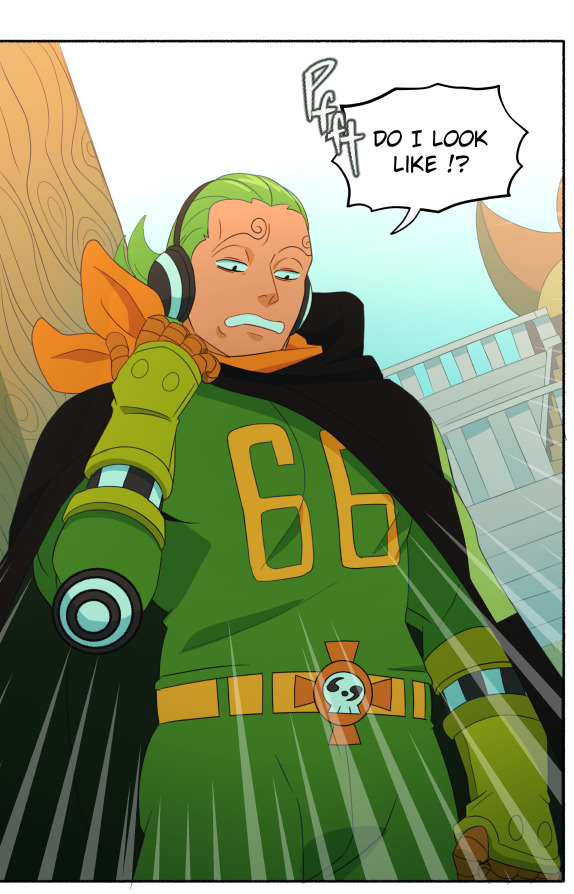
this is exactly what happened
(based on this)
#tony tony chopper#vinsmoke yonji#germa 66#one piece#one piece fanart#vinsmoke brothers#whole cake island#my art#“do i look like that noodle noggin bird chested fuck up”#disgusting how could you tanuki
3K notes
·
View notes